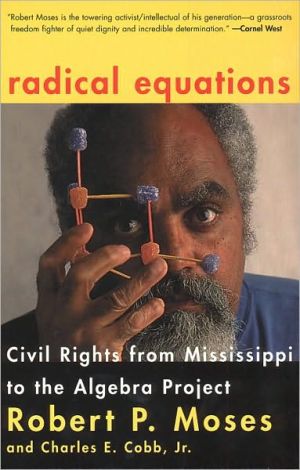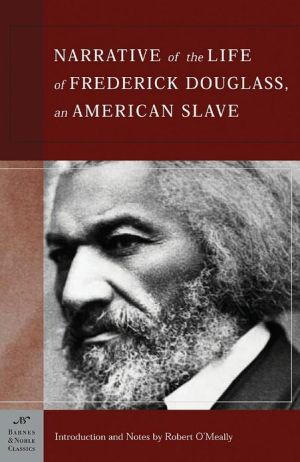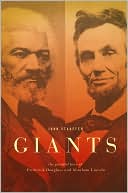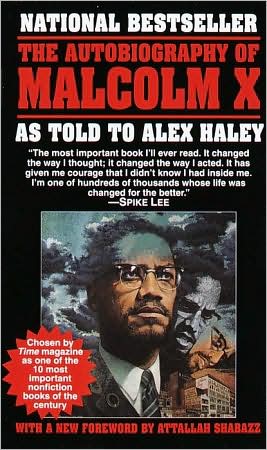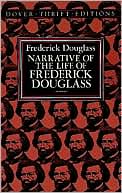Radical Equations Math Literacy and Civil Rights
At a time when popular solutions to the educational plight of poor children of color are imposed from the outside-national standards, high-stakes tests, charismatic individual saviors-the acclaimed Algebra Project and its founder, Robert Moses, offer a vision of school reform based in the power of communities. Begun in 1982, the Algebra Project is transforming math education in twenty-five cities. Founded on the belief that math-science literacy is a prerequisite for full citizenship in...
Search in google:
At a time when popular solutions to the educational plight of poor children of color are imposed from the outside-national standards, high-stakes tests, charismatic individual saviors-the acclaimed Algebra Project and its founder, Robert Moses, offer a vision of school reform based in the power of communities. Begun in 1982, the Algebra Project is transforming math education in twenty-five cities. Founded on the belief that math-science literacy is a prerequisite for full citizenship in society, the Project works with entire communities-parents, teachers, and especially students-to create a culture of literacy around algebra, a crucial stepping-stone to college math and opportunity.Telling the story of this remarkable program, Robert Moses draws on lessons from the 1960s Southern voter registration he famously helped organize: 'Everyone said sharecroppers didn't want to vote. It wasn't until we got them demanding to vote that we got attention. Today, when kids are falling wholesale through the cracks, people say they don't want to learn. We have to get the kids themselves to demand what everyone says they don't want.'We see the Algebra Project organizing community by community. Older kids serve as coaches for younger students and build a self-sustained tradition of leadership. Teachers use innovative techniques. And we see the remarkable success stories of schools like the predominately poor Hart School in Bessemer, Alabama, which outscored the city's middle-class flagship school in just three years.Radical Equations provides a model for anyone looking for a community-based solution to the problems of our disadvantaged schools.Publishers Weekly"The ongoing struggle for citizenship and equality for minority people is now linked to an issue of math and science literacy," argue Moses, an educator and civil rights activist, and Cobb, a cofounder of the National Association of Black Journalists. Moses's Algebra Project, which he initiated in McComb County, Miss., in 1982, is not a traditional program of school reform. It aims to nurture collaboration between parents, teachers and students in order to teach middle-school kids algebra--a course that Moses believes is a crucial stepping-stone to college level math and, thus, lifelong economic opportunity. Drawing its inspiration from the civil rights movement's organizing tactics, the first part of this book is devoted to detailing how black Americans undid the white choke hold on Southern politics. In part two, Moses shows how the same grassroots organizing can be applied to make change in the classroom. He also explains why the project's success rate is so much higher than that of traditional math programs. Peppered with anecdotes and quotations from participants, this dense book is surprisingly captivating. Moses's main argument should resonate with concerned parents and community leaders as well as educators. An important step forward in math pedagogy and a provocative field manual, this book is a radical equation indeed. (Feb.) Forecast: Moses's status as a legendary civil rights activist, a MacArthur Award recipient and a dynamic voice in education should help garner an enthusiastic reception for this book, particularly in cities like Boston and Los Angeles, where he has established divisions of the Algebra Project and where an author tour is planned. Copyright 2001 Cahners Business Information.
\ \ \ \ \ Chapter One\ Algebra and Civil Rights?\ \ \ In order for us as poor and oppressed people to become a part of a society that is meaningful, the system under which we now exist has to be radically changed. This means that we are going to have to learn to think in radical terms. I use the term radical in its original meaning—getting down to and understanding the root cause. It means facing a system that does not lend itself to your needs and devising means by which you change that system. That is easier said than done. But one of the things that has to be faced is, in the process of wanting to change that system, how much have we got to do to find out who we are, where we have come from and where we are going.... I am saying as you must say, too, that in order to see where we are going, we not only must remember where we have been, but we must understand where we have been.\ — Ella Baker\ \ \ The sit-ins woke me up.\ Until then, my Black life was conflicted. I was a twenty-six-year-old teacher at Horace Mann, an elite private school in the Bronx, moving back and forth between the sharply contrasting worlds of Hamilton College, Harvard University, Horace Mann, and Harlem.\ The sit-ins hit me powerfully, in the soul as well as the brain. I was mesmerized by the pictures I saw almost every day on the front pages of the New York Times—young committed Black faces seated at lunch counters or picketing, directly and with great dignity, challenging white supremacy in the South. They looked like I felt.\ It was the sit-in movement that led me to Mississippi for the first time in 1960. And that trip changed my life. I returned to the state a year later and over the next four years, was transformed as I took part in the voter registration movement there. The great campaigns of protest so identified with Dr. Martin Luther King, Jr., were swirling around us, inspiring immense crowds in vast public spaces. But along with students from the sit-in movement, in Mississippi I became immersed in and committed to the older but less well-known tradition of community organizing. In my mind, Ella Baker, who helped to found Dr. King's organization, symbolizes this organizing tradition—quiet work in out-of-the-way places and the commitment of organizers-digging into local communities.\ She was our "fundi." In Tanzania, where I lived for a time in the 1970s, the Swahili word fundi refers to a concept of passing on knowledge through direct contact with people who are fundis—skilled craftsmen and instructors. Ella Baker, as well as others, was our fundi in the tradition of community organizing. Borrowing from another African tradition, I feel the need to speak the names of at least some of these important adult Black grassroots leaders who quietly shaped not only Mississippi's civil rights movement, but the southern civil rights movement as a whole: Amzie Moore, Fannie Lou Hamer, Hartman Turnbow, Irene Johnson, Victoria Gray, Vernon Dahmer, Unita Blackwell, Henry Sias, Aylene Quin, C. O. Chinn, C. C. Bryant, Webb Owens, E.W. Steptoe, Annie Devine, and Hazel Palmer. Their work, which also educated me and other young people, changed the political terrain of a state, and of the nation. What they were is who we are now.\ In those days, of course, the issue was the right to vote, and the question was political access. Voter registration was by no means the only issue one could have fought for, but it was crucial and urgent: Black people had no real control over their political lives, and the time was right to organize a movement to change this. There existed a powerful consensus on the issue of gaining the political franchise, and the drive for voter registration—especially where it took place deep in the Black belt of the South—captured the imaginations of Americans, particularly of African Americans. So, for a short period of time, because there was agreement among all of the people acting to change Mississippi, we were able to get resources and people from around the country to come and work with us on a common program to get the vote. There was consensus providing a base for strategy and action.\ Today, I want to argue, the most urgent social issue affecting poor people and people of color is economic access. In today's world, economic access and full citizenship depend crucially on math and science literacy. I believe that the absence of math literacy in urban and rural communities throughout this country is an issue as urgent as the lack of registered Black voters in Mississippi was in 1961. I believe we can get the same kind of consensus we had in the 1960s for the effort of repairing this. And I believe that solving the problem requires exactly the kind of community organizing that changed the South in the 1960s. This has been my work—and that of the Algebra Project—for the past twenty years.\ I know how strange it can sound to say that math literacy—and algebra in particular—is the key to the future of disenfranchised communities, but that's what I think, and believe with all of my heart. Let me tell you how and why.\ \ \ HOW MATHEMATICS BECAME A CIVIL RIGHTS BATTLEGROUND\ When I first came to Mississippi, most Black people living in the rich cotton-growing land of the Delta, where they were a majority of the population, were living in serfdom on plantations. They had no control over their lives—their political lives, their economic lives, their educational lives. Within industrialized U.S. society, a microcosm of serfdom had been allowed to grow. The civil rights movement used the vote and political access to try to break that up.\ We are growing similar serflike communities within our cities today. This began to become apparent as the southern civil rights movement was gaining some of its most important breakthroughs. In 1965, Los Angeles and other urban areas exploded for a brief second and everyone got concerned. Those of us who live in these neighborhoods today are watching them implode all of the time. The violence and the criminalization make people eat each other up. Most of what is proposed in response are Band-Aid solutions—build more jails, put more police on the street. That is working at the problem from the back end.\ What is central now is the need for economic access; the political process has been opened—there are no formal barriers to voting, for example—but economic access, taking advantage of new technologies and economic opportunity, demands as much effort as political struggle required in the 1960s.\ A great technological shift has occurred that places the need for math literacy front and center. Consider two epochal machines from the middle of the twentieth century, and how much our society has changed since they were introduced.\ The Hopson plantation, a few miles south of Clarksdale on Highway 49, is one of the largest and oldest in Mississippi. In our work we passed it often in the 1960s, unaware of its significance. On a piece of the plantation's land, just off the main highway by the banks of a small creek and a hog farm, there's an old rusted-out machine, one of the first cotton-picking machines used in the state of Mississippi. A nearby marker reports that on October 2, 1944, the Hopson plantation was the site of the first demonstration of a reliable mechanical cotton picker. On that day, a crowd of almost three thousand sharecroppers, landowners, and townspeople gathered to watch eight bright red machines pick a field of cotton.\ Each machine picked about one thousand pounds in an hour. A good human cotton picker could pick about twenty to thirty pounds an hour. On that first day the machines picked all of the cotton in the field, about sixty-two bales. In dollars and cents, according to the remarkably precise calculations of plantation owner Howell Hopson, the cost of picking by machine was $5.26; the cost of picking by hand was $39.41.\ Afterward, in a memo, Hopson compared the introduction of the new harvester to the introduction of the cotton gin more than two centuries earlier. But Hopson understated the social implications of the machine. By speeding up the processing of raw cotton, the cotton gin had created the demand for cheap labor that was met by the enslavement of Africans. Sharecropping continued the fundamental relations of slavery: Black labor, white power. Although slavery was abolished, in the decades after the Civil War all of the laws and the police powers of the state were aimed at ensuring that Black economic life be confined to labor in the cotton fields; that no other arena of opportunity be envisioned. Segregation in this sense of dependency on Black labor was a matter of economic survival for whites in states like Mississippi. With the mechanical cotton picker, this was no longer true. And this fact would not only slowly begin to change the economics of Mississippi, but its politics as well. Put simply, Black manual labor became far less necessary. The mechanical cotton picker was perhaps the single most important reason why the White Citizens Council could mount a drive to "export" Black people out of the state after the 1954 Supreme Court decision with so little objection from the powerful planters. Economic necessity no longer acted as a constraint on the virulence of white racism.\ The cotton-picking machine was part of a larger technological transformation affecting the entire nation. The year before cotton was first picked by machine in Mississippi, at the University of Pennsylvania the United States Army had contracted some of the school's best engineers to develop an electronic machine for calculating artillery-firing tables. The result was the Electronic Numerical Integrator and Computer (ENIAC), the world's first programmable computer. It was a monster of a machine, weighing thirty tons, standing ten feet high and eighty feet wide with over eighteen thousand vacuum tubes and rewirable control panels. Although it had far less power than today's typical portable computer, ENIAC ushered in the computer era. And just as automation and the mechanical cotton picker were changing cotton fields and southern agriculture, so, inexorably, would the computer push us from the assembly line by shifting work away from industrially based technology to computer-based technology. In field and factory, the twentieth century was being uprooted.\ With the joining of science, "high" technology, and commerce, something very different from the smokestack industries that arose in the last century began to dominate production and the economy. Among the offspring of the new technology were fiber optics, computers and electronics, polymers, "research and development," and a range of information technologies. Almost anyone driving a car today is driving a wheeled computer. Detroit automakers now spend more money putting onboard computers and microprocessors in cars than they spend on steel. In industrial zones like the Chicago area, steel plants and slaughterhouses closed or began moving away around the same time the mechanized South began pushing people out. The industrial corridor of great factory cities lying between the Great Lakes and the Atlantic that once powered the economy acquired a new name: the rust belt.\ And as the need for assembly line workers diminished, the need for what economists have begun to call the "knowledge worker" grew. Such workers have technical skills related to computers and automated machinery, and interpersonal skills such as the ability to communicate effectively and work as part of a team. The need for such workers continues to grow along with their salaries. The American Electronics Association (AEA) defines high-tech workers as those working in computers, consumer electronics, communications equipment, electronic components, semiconductors, industrial electronics, photonics, software services, data processing, and defense electronics. This industry paid a total of $280 billion in wages between 1997 and 1999 according to the AEA. During that same period the group says, high-tech workers earned 82 percent more than people in other industries earned.\ Sixty percent of new jobs will require skills possessed by only 22 percent of the young people entering the job market now. These jobs require use of a computer and pay about 15 percent more than jobs that do not. And those jobs that do not are dwindling. Right now, the Department of Labor says, 70 percent of all jobs require technology literacy; by the year 2010 all jobs will require significant technical skills. And if that seems unimaginable, consider this: the Department of Labor says that 80 percent of those future jobs do not yet exist. The demand for high-tech workers is now, however. "If there is a dark cloud," former AEA chairman Ed Bersoff told a reporter, "it's that if the trend continues [and the tech industry keeps growing], we better find more workers." Next year, 1.3 million available high-tech jobs are expected to go unfilled and the demand for workers with high-tech skills is expected to double by 2006.\ These trends impose new requirements on education and highlight an old problem. "The most important factor affecting the long-term production of scientists is the tragic inadequacy of our primary and secondary science and mathematics education program," National Science Foundation chairman James J. Duderstadt told the Washington Post. The traditional function of math education was to identify bright young potential mathematicians and steer them into math programs based on university campuses. The process was almost self-selecting. Before you could get to anything interesting you had to absorb a lot of abstract math, unlike, say, social studies or even English, which in the hands of creative teachers could be presented effectively and interestingly through literature, stories, and events. These subjects didn't have to be boring; math was expected to be.\ And in the culture itself—our culture—illiteracy in math is acceptable the way illiteracy in reading and writing is unacceptable. Failure is tolerated in math but not in English. Your parent may well lean over your shoulder as you struggle with the term paper your English class requires, or the book report that is due, making sure that you write it, checking the spelling and the grammar. But if you're struggling with an equation while doing your algebra homework, more likely your parent will look over your shoulder, wrinkle a brow in puzzlement, then say something like "I never got that stuff either; do the best you can and try not to fail." This is an old problem. In effect, math instruction weeds out people and you wind up with what amounts to a priesthood, masters of the arcane secrets of math through what appears to be some God-given talent or magic. Forty percent of students taking freshman calculus in U.S. universities fail it; but not being "good" in math does not in any way imply inferiority, rather, it confirms that you're just like most everyone else.\ The love-hate relationship Black people have with technology as well as poor schools concentrated in poor Black communities compound the problem. While technological innovation has deep roots in the overall history of African people—there's ancient Egypt and devices like the shadoof; there's a whole lineage of African-American inventors; even the cotton gin, some say, was first sketched on the ground by an African slave—for most of the last five hundred years Black encounters with technology have been destructive, crushing of aspirations. Compasses led Portuguese explorers to Africa, firearms helped conquer the continent. The Atlantic slave trade was facilitated by innovation in ship design. Human field workers were displaced by machines and moved north, and their children were displaced by newer high-tech machinery.\ It is of course a gross oversimplification to say that Black oppression exists because of technology, because the three-masted caravel, the cotton gin, or the cotton picker or the computer was invented. Or that high-tech sneakers advertised by basketball players are the cause of juvenile delinquency. Coming to grips with technology is a need; that Black people have not done so for the most part is a problem. In inner cities or the rural South there's no tinkering in the garage, with the ambition of designing something better than Microsoft Windows. There's no equivalent in computer programming to the determined practice seen every day on basketball courts or the daily honing of rap style by groups of teenagers. Countless young Blacks envision becoming the next Michael Jordan, or Whitney Houston, or Master P. Few aim at being the next Steve Jobs, or another George Washington Carver, for that matter. Blacks make up perhaps 15 percent of this country's population, yet in 1995 they earned 1.8 percent of the Ph.D.s in computer science, 2.1 percent of those in engineering, 1.5 percent in the physical sciences, and 0.6 percent in mathematics.\ Recently I heard from a woman who teaches mathematics at the University of Arkansas at Monticello. She told me that about 80 percent of freshman must take remedial math, for which they cannot get college credit. Another person, the head of a center for academic advising for minority students at the University of Kentucky at Louisville, told me that close to 90 percent of entering minority students had to take remedial algebra during their freshman year, for which they did not get credit. A faculty member in experimental physics at Rutgers recently lamented the absence of minority students in his classes. He said, "They're all across campus in the remedial sections."\ Industrial technology created schools that educated an elite to run society, while the rest were prepared for factory work by performing repetitive tasks that mimicked factories. New technology demands a new literacy—higher math skills for everyone, urban and rural. At the warehouse of a large Mississippi Delta shipping service, the area's largest employer, for example, all the dollies have computers on them. The company needs workers who understand those computers and can tell them what to do to better organize the work.\ Math illiteracy is not unique to Blacks the way the denial of the right to vote in Mississippi was. But it affects Blacks and other minorities much, much more intensely, making them the designated serfs of the information age just as the people that we worked with in the 1960s on the plantations were Mississippi's serfs then.\ There is urgency to this. Consider prisons, these days the fastest-growing public sector industry in this country. The ranks of prisoners grow enough each year to fill New York's Yankee Stadium to overflowing. A young man born this year has a one in twenty chance of living some part of his life in jail ... unless he is Black, then his chances jump to one in four. In their paper on "incarcerated children" Washington, D.C., attorneys Joseph B. Tulman and Mary G. Hynes write of young people in prisons: "In overwhelming percentages, they are poor children, and they are children of color." They cite a relationship between literacy and prison as well as poverty and prison. "Large percentages of children in the delinquency system and adults in the criminal system are severely undereducated, and literacy skills in these populations are strikingly low."\ So today, as when the Mississippi Freedom Democratic Party (MFDP) made its challenge to Mississippi Democrats in Atlantic City in 1964, the question remains: How do the people at the bottom get into the mix? In the 1960s, in Mississippi, it was the sharecroppers. In our time, across the country, it is Black, Latino, and poor white students who are trapped at the bottom with prisons as their plantations.\ Are we going to have a society where only a small group of people are prepared for the future, where there's a huge knowledge gap? How does such a society stabilize itself?\ \ \ MATHEMATICS AS A TOOL OF LIBERATION\ Math literacy and economic access are how we are going to give hope to the young generation. The lesson I draw from the history and the statistics I have just recounted is that the idea of citizenship now requires not only literacy in reading and writing but literacy in math and science. And the way we guarantee this necessary literacy is through education conceived of much more broadly than what goes on in classrooms.\ The new technologies process information at unprecedented speed and quantities, filtering into unanticipated nooks and crannies of society's (indeed, the world's) economic arrangements—think of the relative suddenness with which computers have become personal, popular, and cheap—thereby creating demand for competent workers who understand these new technological tools. "Business" is forced to pressure "education" to produce students with the requisite understandings and competencies.\ But this technological shift and the attention it brings also create some crawl space for those concerned about things other than the needs of corporations. Within this crawl space the Algebra Project has staked out the goal of establishing math literacy for freedom and citizenship.\ And why focus, as we do, on algebra, of all things?\ The computer, of course, is the symbol of the great technological shift that has occurred since World War II. Everybody knows that there's something going on with computers out there; E-mail, the Internet, memory, bits, and bytes have entered into common usage. In the time between ENIAC and Windows 2000, the computer has become a cultural force as well as an instrument of work. (The only equivalent to this impact that I can think of is the automobile.) Strictly speaking, "culture" is not visible; what we see are the ways culture manifests itself. Everybody is willing to accept that what is powering these now-indispensable computers is a mathematical, symbolic language. So, while the visible manifestation of the technological shift is the computer, the hidden culture of computers is math.\ That sets the stage; you have something in there that you can organize around if you're concerned about math literacy.\ Algebra was assigned a certain role, a certain place in the education system. Students learned how to manipulate abstract symbolic representations for underlying mathematical concepts. Now here comes history, which brings in a technology that places abstract symbolic representations front and center. These representations are the tools to control the technology, and in order to use this technology to organize work you have to understand these symbolic representations and the place that society has assigned for young people to learn this symbolism—this is algebra. So, now algebra becomes an enormous barrier.\ Before, in the old system, it was a barrier in the sense that along with foreign languages algebra acted as one of the gates through which you entered college. If you didn't take algebra, you had to take a language and do well in that. Algebra could not stop you from going to college—not having it could hinder you but it couldn't stop you. And it was okay to be in college unable to do math. People boasted like the parent I discussed earlier: "Never could do that stuff," they said, on the college campus then.\ But those days are over. It's not so cool or hip to be completely illiterate in math. The older generation may be able to get away with it, but the younger generation coming up now can't—not if they're going to function in the society, have economic viability, be in a position to meaningfully participate, and have some say-so in the decision making that affects their lives. They cannot afford to be completely ignorant of these technological tools and languages.\ So algebra, once solely in place as the gatekeeper for higher math and the priesthood who gained access to it, now is the gatekeeper for citizenship; and people who don't have it are like the people who couldn't read and write in the industrial age. But because of how access to—the learning of—algebra was organized in the industrial era, its place in society under the old jurisdiction, it has become not a barrier to college entrance, but a barrier to citizenship. That's the importance of algebra that has emerged with the new higher technology. It didn't have to be algebra; that's the decision the mathematical community made over the years. In France, geometry is the driving force of the math and technology education. So, there's nothing that says that it has to be algebra. There's nothing that says it has to be geometry. It could be a mix of a number of things—and some people would argue that it should be. There are educators and people who are driving math reform who want to make it a mix, but they're dealing with teachers and parents who understand that geometry is one subject, and algebra is another. They don't understand unified math. So I don't think there will be cultural change around that anytime soon. For the time being, it's going to be algebra.\ \ \ ORGANIZING ALGEBRA: THE NEED TO MAKE A DEMAND\ The Algebra Project is founded on the idea that the ongoing struggle for citizenship and equality for minority people is now linked to an issue of math and science literacy. This idea determines strategies and choices made about the organization, dissemination, and content of the curriculum. It's important to make it clear that even the development of some sterling new curriculum—a real breakthrough—would not make us happy if it did not deeply and seriously address the issue of access to literacy for everyone. That is what is driving the project. The Algebra Project is not about simply transferring a body of knowledge to children. It is about using that knowledge as a tool to a much larger end.\ One of the implications of this position has been that we have not spent a major portion of our time developing a full curriculum for any grade level. What we have done is take what we thought was a minimum intervention and try to maximize its effects. In that process we began to define what we're calling a "floor"—an acceptable goal or standard for the mathematics component of math-science literacy at the middle school level. The floor is this: you have all the middle school students ready to do the college prep math sequence when they get to high school.\ There are two things to clarify about this floor. First, it's the floor, not the ceiling. We're not trying to put constraints or limits on what any group of children might learn. Second, in many ways the college prep math curriculum is a moving target. It differs from place to place, and it's changing. So for each school, there's a local target. My metaphor is that you're running to get on board the bus. The bus is moving, and you can't get on it from a standstill position. As your speed begins to approach the speed of the bus, you have a chance of hopping on.\ In terms of curriculum, this means that for each middle school student there is a standard curriculum out there, which is the college prep sequence in high school. What you want for Algebra Project students is this: whatever is out there, they engage it. In their school system, whatever is in place as the standard college prep curriculum, you want them to engage that. It's important, however, that whatever else is coming in to supplement or replace that curriculum has to be a bona fide college preparation. It can't be something that is put in place to continue a tradition of separate tracks for some students.\ It is not clear that the expression "standard college prep math curriculum" means something coherent in terms of mathematical content. It certainly does mean, however, something in terms of what colleges are going to accept as admissions requirements. It must mean, at a minimum, that when you finish it you arrive at college ready to do college mathematics. That's another floor that we have to be concerned about, although our work is largely with middle schools. Our aim is to change the situation that currently exists, where large percentages of minority students who get through a high school and get admitted to a college have to take remedial math in order to get to the place where they can even get college credit mathematics courses.\ Part of the literacy standard, then, the floor for all students, must be this: when you leave middle school, you are ready to engage with the college preparatory sequence in high school. It's a moving target, but however it's defined, it must then be seen as another floor: when you leave high school, you must be ready to engage college curricula in math and science, for full college credit.\ Consider the role of mathematicians here. There is nothing in the training of mathematicians that prepares them to lead in such a literacy effort. Yet the literacy effort really cannot succeed unless it enlists the active participation of some critical mass of the mathematical community. The question of how we all learn to work across several arenas is unsolved. Those arenas are large and complicated. They include the curriculum itself, instructional philosophy, schools, school systems, and individual classrooms. Communities and their processes of social change must also be centrally involved, and in some broad sense, national and local politics. Really working in all these arenas will require that many people adopt a more holistic outlook than they have ever done before.\ Organizing around algebra has the potential to open a doorway that's been locked. Math literacy and economic access are the Algebra Project's foci for giving hope to the young generation. That's a new problem for educators. It's a new problem for the country. The traditional role of science and math education has been to train an elite, create a priesthood, find a few bright students and bring them into university research. It hasn't been a literacy effort. We are putting literacy, math literacy, on the table. Instead of weeding all but the best students out of advanced math, schools must commit to everyone gaining this literacy as they have committed to everyone having a reading-writing literacy.\ This is a cultural struggle, the creation of a culture of mathematical literacy that's going to operate within the black community as church culture does. And that means that math won't be just school-based, but available as reading and writing are. Kids now routinely assume that someone will be able to explain some word to them, or teach them how to read a sentence if they don't understand it. They also take it as a matter of course that no one can help them with their "higher" math studies. Projecting several generations down the road we can see a youngster who has grown up in a black neighborhood being able to get his or her questions about mathematics as easily answered in the neighborhood.\ It is a little bit like guerrilla warfare. You're striking. You're pulling back. You're looking at where you are. You're striking again. You're looking for an opening. You're looking for a soft spot, trying to find out where you can penetrate. And you are working with and against various structures. You're in them, but you're working against them at various levels.\ In several Algebra Project sites students have formed the Young People's Project (YPP). The beauty of the YPP is that its members are in the schools, but organizationally it is not part of the school system. YPP members have carved out their own crawl space in the schools that allows them to operate and get some presence, some visibility there, some legitimacy. That's a big step for young people, to get a piece of turf in school. They're not going to be easy to dislodge.\ Many people will see our vision as impossible. There's a sense in which most people are not going to believe or accept any of this agenda until they are confronted with the products of such an effort: students who come out of classrooms armed with a new understanding of mathematics and with a new understanding of themselves as leaders, participants, and learners. As I said before, in the sixties everyone said sharecroppers were apathetic until we got them demanding to vote. That finally got attention. Here, where kids are falling wholesale through the cracks—or chasms—dropping out of sight, becoming fodder for jails, people say they do not want to learn. The only ones who can dispel that notion are the kids themselves. They, like Mrs. Hamer, Mrs. Devine, E.W. Steptoe, and others who changed the political face of Mississippi in the 1960s, have to demand what everyone says they don't want.\ \ \ DRAWING ON THE PAST: THE ROOTS OF OUR MOVEMENT\ The Algebra Project is first and foremost an organizing project—a community organizing project—rather than a traditional program of school reform. It draws its inspiration and its methods from the organizing tradition of the civil rights movement. Like the civil rights movement, the Algebra Project is a process, not an event.\ Two key aspects of the Mississippi organizing tradition underlie the Algebra Project: the centrality of families to the work of organizing, and organizing in the context of the community in which one lives and works. As civil rights workers in Mississippi, we were absorbed into families as we moved from place to place with scarcely a dollar in our pockets, and this credential—being one of the community's children—negated the white power structure's efforts to label us "outside agitators." In this way we were able to sink deep roots into the community, enlarging and strengthening connections in and among different communities, absorbing into our consciousness the community's memories of "where we have been," forcing us to our own understanding of our collective experience.\ We are struggling to frame some important questions: Is there a way to talk with young people today as Amzie Moore and Ella Baker did with us in the 1960s? Is there a consensus for young Blacks, Latinos, and poor whites to tap into that will drive such a literacy effort? What price must they pay to wage such a struggle?\ Like Ella Baker, we believe in these young people, that they have the energy, the courage, the hope to devise means to change their condition. Although much concern about the education of African-American young people is voiced today, I am frequently asked why I have turned to teaching school and developing curriculum—teaching middle school and high school no less. There is a hint of criticism in the question, the suggestion that I am wasting my time, have abandoned efforts at attempting real, meaningful social change. After all, in the end, such work "merely" leads to youngsters finding a comfortable place in the system with a good job. Nothing "radical" about that, I am told. This is a failure to understand what actually is "radical," so it might be useful to repeat what Ella Baker posits as necessary to the struggle of poor and oppressed people: "It means facing a system that does not lend itself to your needs and devising means by which you change that system."\ The key word here is you. Our efforts with our target population is what defines the radical nature of the Algebra Project, not program specifics. To make myself very, very clear, even the development of some sterling new curriculum—a real breakthrough—would not make us happy if it did not deeply and seriously empower the target population to demand access to literacy for everyone. That is what is driving the project. What is radical about the Algebra Project is the students we are trying to reach and the people we work with to drive a broad math literacy effort—the Black and poor students and the communities in which they live, the usually excluded. Ella's words finally mean, whether for voting rights or economic access, "You who are poor and oppressed: your need, you must make change. You must fashion a struggle." Young people finding their voice instead of being spoken for is a crucial part of the process. Then and now those designated as serfs are expected to remain paralyzed, unable to take an action and unable to voice a demand—their lives dependent on the goodwill and good works of others. We believe the kind of systemic change necessary to prepare our young people for the demands of the twenty-first century requires young people to take the lead in changing it.\ These are radical ideas the way that forty years ago constructing the MFDP so that sharecroppers and day workers could have a voice was radical. What made it radical was the work, the effort, at encouraging this group to empower itself. This was Ella Baker's great lesson, and still a touchstone for us today: that the target population should also make a demand instead of just having their needs advocated by well-intentioned "radical" reformers. You might say that it radicalizes radicalism. That's what we learned in Mississippi, that it is getting people at the bottom to make demands, on themselves first, then on the system, that leads to some of the most important changes. They have to find their voices. No matter how great Martin Luther King, Jr., was he could not go and challenge the seating of the Mississippi Democrats at Atlantic City. He could advocate for them and support them, but he could not lead the challenge. The only people who could do that were the people from Mississippi. And people will not organize that kind of seminal effort around somebody else's agenda. It's got to be internalized—this is our agenda.\ There had been advocates for civil rights long before SNCC and CORE field secretaries arrived in Mississippi. Indeed, the 1954 Supreme Court decision was one important victory won by civil rights advocates. And perhaps because it was primarily won by advocates, it proceeded "with all deliberate speed." No one disputes the importance of such victories, but, nonetheless, it was when sharecroppers, day laborers, and domestic workers found their voice, stood up, and demanded change, that the Mississippi political game was really over. When these folk, people for whom others traditionally had spoken and advocated, stood up and said, "We demand the right to vote!" refuting by their voices and actions the idea that they were uninterested in doing so, they could not be refused, and the century-long game of oppression through denial of the political franchise ended.\ So to understand the Algebra Project you must begin with the idea of our targeted young people finding their voice as sharecroppers and day laborers, maids, farmers, and workers of all sorts found theirs in the 1960s. Of course there are differences between the 1960s and what the AP is doing now. For one, the time span between the start of the sit-in movement and the challenge by the MFDP in Atlantic City was incredibly brief, sandwiched between two presidential elections (Kennedy-Nixon and Johnson-Goldwater). When I look back it feels like twenty years folded into four; I still can hardly believe how short a time period that was. Math literacy, however, will require a longer time frame. There is a steep learning curve and what we're looking at with the AP is something evolving over generations as math literacy workers/organizers acquire the skills and training through study and practice and begin tackling the system. Young people, however, may speed this up as youth clearly did in the civil rights movement. And, whereas the right to vote campaign took place in the Deep South, the math literacy problem is throughout the entire nation.\ Yet to understand the Algebra Project, you need to understand the spirit and the crucial lessons of the organizing tradition of the civil rights movement. In Mississippi, the voiceless found their voice, and once raised, it could not be ignored. Organizers learned to locate the vast resources in communities that seemed impoverished and paralyzed at first glance. The lessons of the movement in Mississippi are exactly the lessons we need to learn and put into practice in order to transform the education of our children and their prospects for the future. As with voting rights four decades ago, we have to flesh out a consensus on math literacy. Without it, moving the country into systemic change around math education becomes almost impossible. You cannot move this country unless you have consensus. The country's too big, too huge, too diverse, too confused. That's part of what we learned in Mississippi. We learned it on the ground, running.\ In this book I present other people's voices as well as my own. Voices from the movement: Ella Baker's, for one. Voices of my colleagues: Dave Dennis's, especially. And voices of kids: the young people's of the Algebra Project. Part of what happened in Mississippi was the creation of a culture of change—a change in the climate of the consciousness of Black people in that state. It is the establishing of this climate and change of consciousness about mathematics in the larger community that will go a long way toward making it possible to change the classrooms—really change the classrooms; for we are talking about systemic change and as a country we don't yet know how to do systemic change. We can't point to any school system where we have put through systemic change around math education.\ This is a very personal book. The stories and lessons I recount from Mississippi are stories and lessons of transformation in the white heat of struggle for change. The story I tell about how the Algebra Project started continues that story of struggle and transformation, in my family and my community. We see in this book the new needs of the twenty-first century, and that meeting these new needs will take us into new territory the way that need for voter registration took us into rural Mississippi. There's even a politics: Who's going to gain access to the new technology? Who's going to control it? What do we have to demand of the educational system to prepare for the new technological era? What opportunities will be available for our children? These are questions that ultimately challenge power as the civil rights movement did, for that earlier movement was about more than lunch counters and ballots.
ForewordviiPart 1In the Spirit of Ella: The Algebra Project and the Organizing Tradition of the Civil Rights Movement1Algebra and Civil Rights?32Learning from Ella: Lessons from Mississippi, ca. 1961233Standin' at the Crossroads: From Voter Registration to Political Party58Part 2Radical Equations: The Story of a Grassroots Education Movement4Bouncing a Ball: The Early Days of the Algebra Project915Pedagogy: The Experience of Teachers and Students1146South Again1347Weldon, North Carolina: The Spirit of Ella Baker1528Shaping Demand: The Young People's Project169AppendixThe Mathematics of Trips195Acknowledgments221Index227
\ Publishers Weekly - Publisher's Weekly\ "The ongoing struggle for citizenship and equality for minority people is now linked to an issue of math and science literacy," argue Moses, an educator and civil rights activist, and Cobb, a cofounder of the National Association of Black Journalists. Moses's Algebra Project, which he initiated in McComb County, Miss., in 1982, is not a traditional program of school reform. It aims to nurture collaboration between parents, teachers and students in order to teach middle-school kids algebra--a course that Moses believes is a crucial stepping-stone to college level math and, thus, lifelong economic opportunity. Drawing its inspiration from the civil rights movement's organizing tactics, the first part of this book is devoted to detailing how black Americans undid the white choke hold on Southern politics. In part two, Moses shows how the same grassroots organizing can be applied to make change in the classroom. He also explains why the project's success rate is so much higher than that of traditional math programs. Peppered with anecdotes and quotations from participants, this dense book is surprisingly captivating. Moses's main argument should resonate with concerned parents and community leaders as well as educators. An important step forward in math pedagogy and a provocative field manual, this book is a radical equation indeed. (Feb.) Forecast: Moses's status as a legendary civil rights activist, a MacArthur Award recipient and a dynamic voice in education should help garner an enthusiastic reception for this book, particularly in cities like Boston and Los Angeles, where he has established divisions of the Algebra Project and where an author tour is planned. Copyright 2001 Cahners Business Information.\ \ \ \ \ BooknewsMoses was already a venerable civil rights campaigner when he embarked on what became an illustrious career in education and mathematics. He has now returned to Mississippi to teach math to descendants of the sharecroppers he helped mobilize 40 years before. With journalist and fellow activist Cole, he tells his personal story and shares his vision of universal math literacy among poor and minority children. He founded the Algebra Project. Annotation c. Book News, Inc., Portland, OR (booknews.com)\ \
